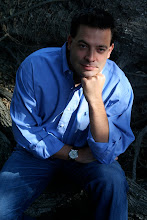Monday, February 8, 2016
The Coldplay Way
Yesterday's Superbowl Football Game In America (I need to say this because there are several people who follow this blog from other countries around the world), was memorable for two reasons. First, it was an uncharacteristically great football matchup between two great football teams. Second, and more importantly because it is the focus of this blogpost, the halftime show was one of the best I have ever seen! It featured the band Coldplay, and two other major artists - Beyonce and Bruno Mars. I was quite literally crying at the end of the show, it was so beautiful.
What was so stunning about the show for me, other than the musical genius behind the tunes and the creative brilliance of the choreography, was it's inclusion of several artists of different styles all in one twelve minute segment. Coldplay, a standalone band for sure, was originally offered the twelve minute halftime show to do for themselves. But they decided to do something different and unique. They decided to make the show not just about themselves, as every other Superbowl artist before them has done, but about including other voices, other performers, other faces, other acts, and other bands which were representative of America as a whole. They chose to make the show a sort of larger pastiche of America as a whole, rather than a focus on themselves as a band.
So, after about 5 minutes of Coldplay, the band Bruno Mars broke in with a hip-hop number. Then, Beyonce and a group of dancers performed a breathtaking dance segment in stilettos (on football grass I might add), for another couple of minutes. Then, the end of the show featured vignettes of other past performers at the Superbowl - U2, Bruce Springsteen, Katy Perry, Michael Jackson, The Rolling Stones, and many others. This inclusion of others into the main performance of their own act is what I am calling in this blogpost...
The Coldplay Way
Inclusion and Inclusiveness has become a "dirty" and "loaded" word in most religious circles. It often connotes a fluidity of doctrine, a vapid openness to all things, an insipid acceptance of all behaviors, and a saccharine laced embracing all ways of life. It sometimes smacks of the 1960's and an "Age of Aquarius" in America where all things were "cool" and "groovy" as long as you were open-minded enough. But I think in our attempt to offer rigid theological boundaries, and to separate ourselves from perspectives which we disagree with, we as a religious community have sometimes gone too far in the other direction and been too rigid.
My great grandfather, Jesse Baird, was a Presbyterian pastor as well, and served as President of San Francisco Theological Seminary in the 1930's and 1940's. As President of the Seminary, he was quite a religiously doctrinaire person in most respects - no playing cards in the house, no dancing, no drinking, no pepper on the tables for fear that the spices would invoke strains of the devil. However, at the same time, he was quite inclusive of other perspectives. As overseer of who spoke in the seminary chapel, Jesse included Jewish rabbis, liberal Christian voices, and religious perspectives even more conservative than his own. Perhaps a better word was ascribed to Jesse's ministry paradigm - "comprehensivism". It was a notion that a person could hold a specific belief system while at the same time being open to other perspectives. Modern psychologists would call this being "differentiated".
In psychological terms, rigidity is just as pathological as total openness. A healthy person, or system, is permeable and porous while at the same time being a strong structure.
You see, truly confident and strong people do not need to be afraid of other perspectives which are different than their own. They know what they believe, and yet they live in the same airspace as people who do not believe the same things. People who are insecure or not confident cannot do this. Any differing opinion or perspective or viewpoint from their own must be not only rejected, but separated from. A truly confident band, like Coldplay, allows other people to be a part of the same act, to enjoy some of the limelight.
What's so remarkable about Coldplay's halftime show (If you haven't seen it, I encourage you to Google it and watch it on youtube), is that afterward, most people thought that the other artists - those who were included - Beyonce and Bruno Mars - actually outshone the main act - Coldplay. But once again, that is what strong and truly confident people are able to do. They are able to allow others to come on stage with them, and occasionally outperform them, because the goal of including other voices is of such great importance. It's....
The Coldplay Way
All For Now,
GB
Subscribe to:
Post Comments (Atom)


No comments:
Post a Comment